Menu
Why Are My African Violet Leaves Curling Upwards or Downwards?
Why Do African Violet Leaves Curl or Reach Upwards?
- African Violet leaves curl or reach upwards when the light they receive is too low.
- The stems start growing longer in size and growing upwards as if they are reaching for the light.
- The leaves no longer grow flat as they usually should, but grow upwards too.
- This causes the plant to become top heavy full of leaves and just long stems at the bottom.
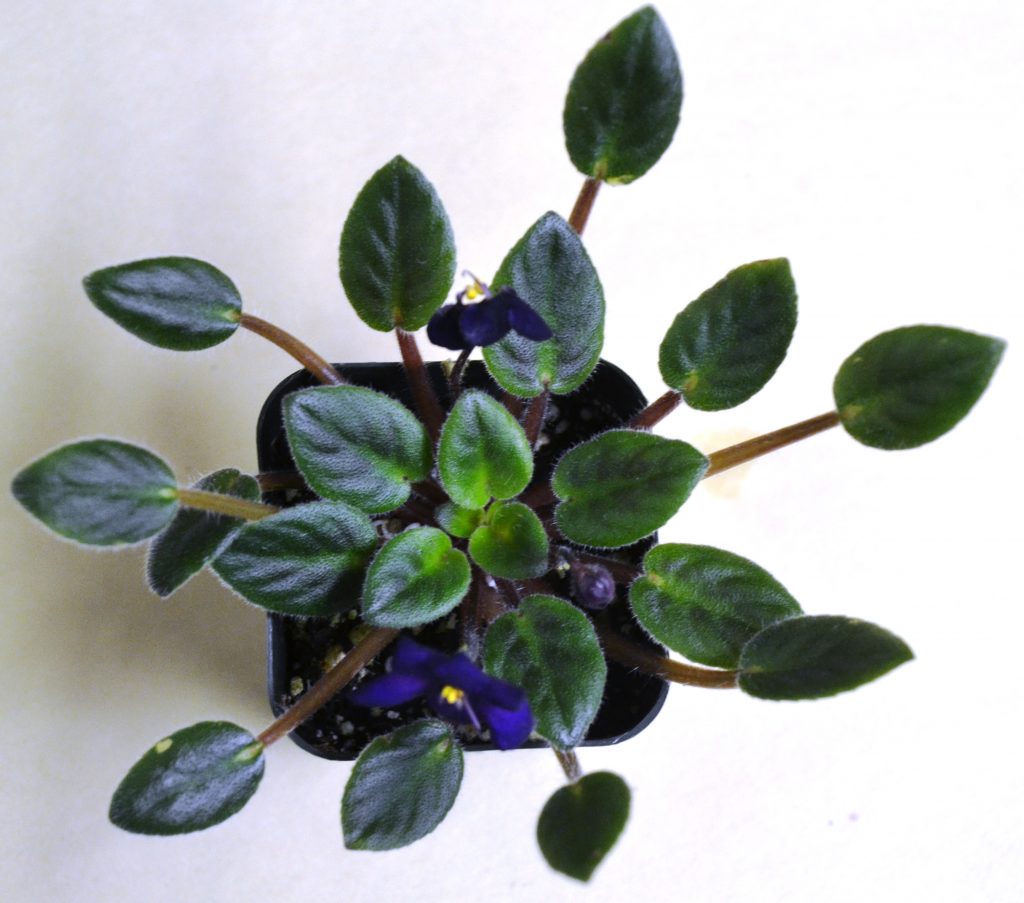
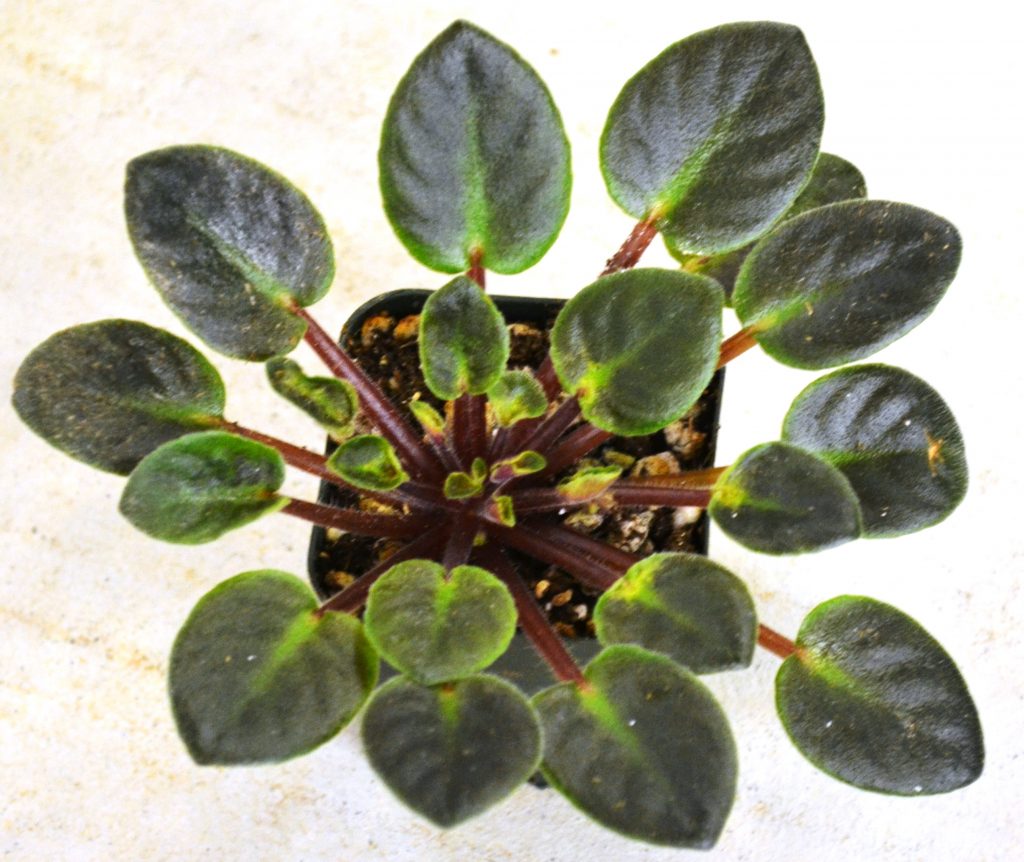
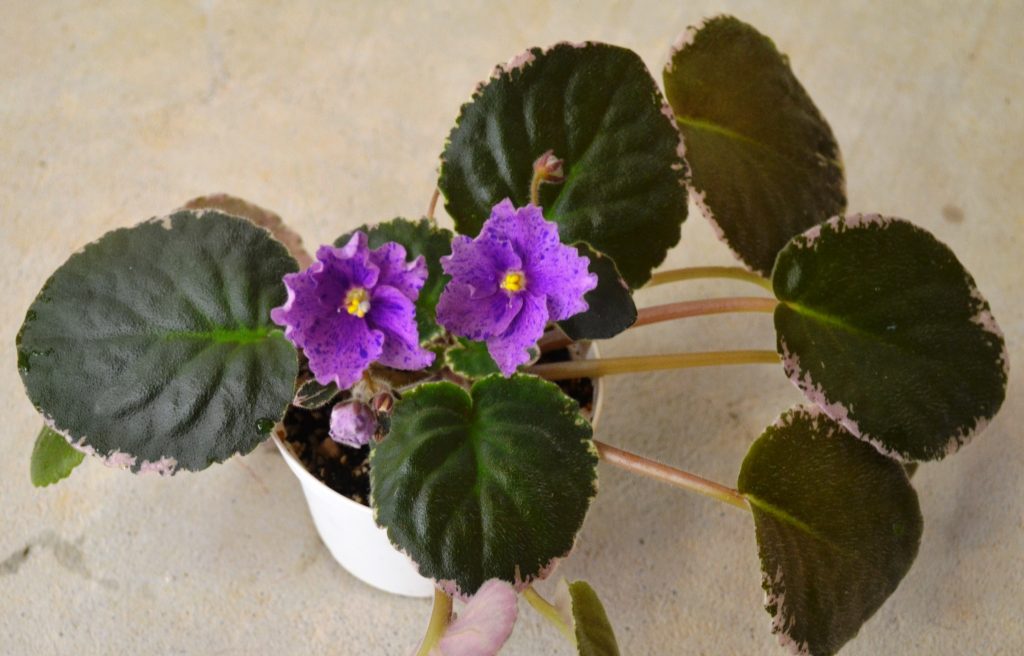
- When African Violet plants are grown under low light the leaves start growing upwards.
- The leaves become thin in texture, deep green in color and the leaf stems become leggy and weak.
- When a plant grows normally, the rosette pattern of the inner leaves will cover the stems of the outer leaves.
- This way the stems of the leaves are barely visible in normal growing African Violets.
- However, under low light exposure, the stems appear “stretched” and further apart and become distinctly visible.
- For more tips on growing African Violets in sunlight, can visit blog post, “Natural Light for African Violet Plants“.
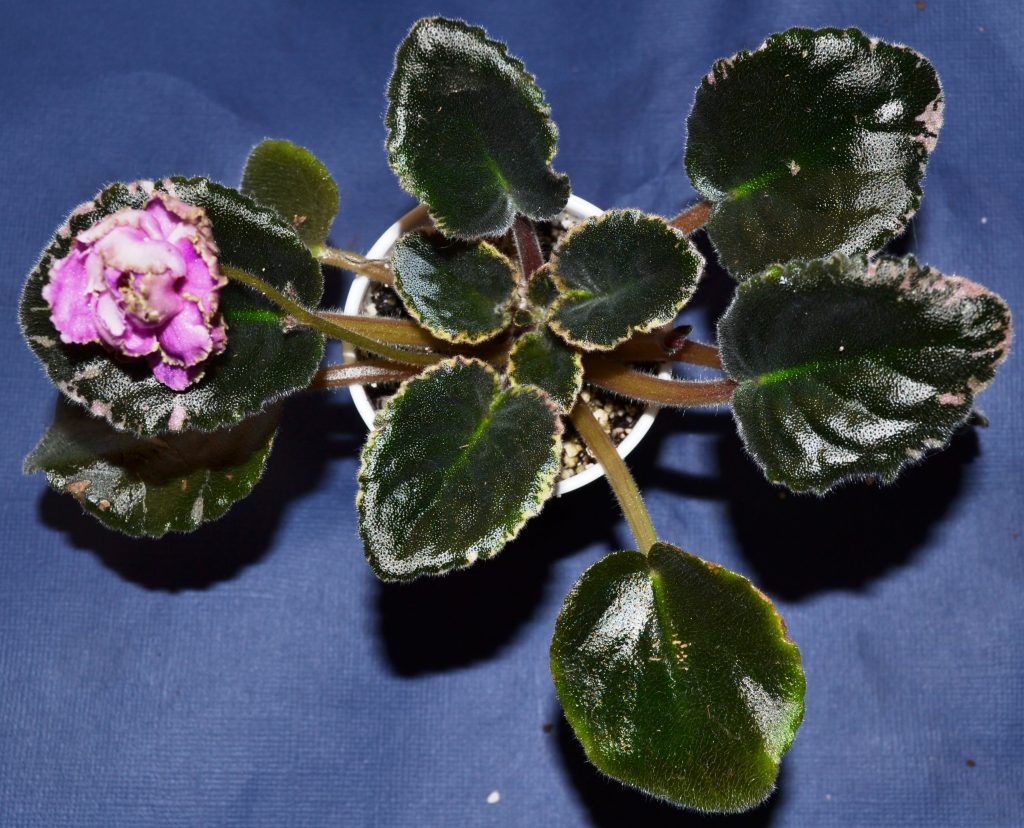
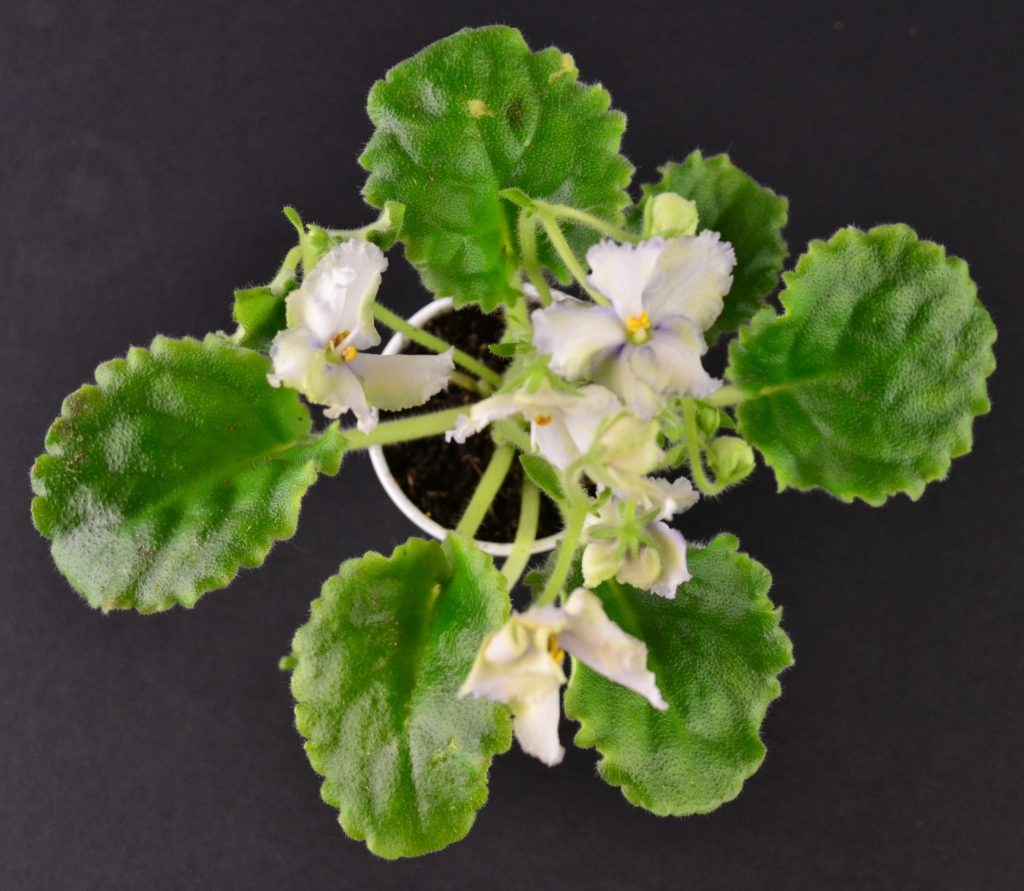
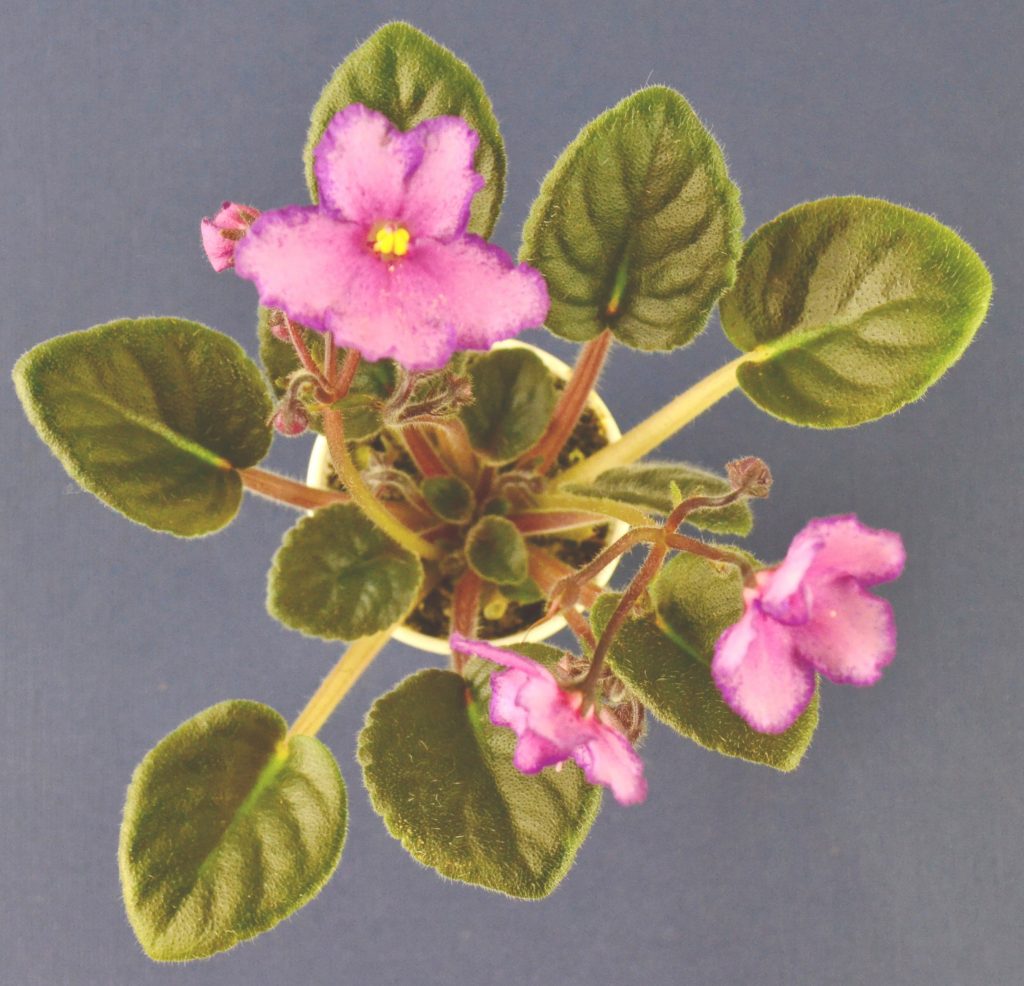
Why Do African Violet Leaves Curl or Droop Downwards?
- Some African Violet plants have naturally occurring curled leaves, such as the Imps varieties and other bustle back leaves. For more information on African Violet leaf type, can visit blog post, “What Are The Different Leaf Types Of African Violet Plants?”
- If the leaves are not naturally curled then there can be multiple reasons for African Violet leaves to curl or droop downwards; either dry soil, root rot, pot bound/compacted plant, excessive light or cold temperatures.
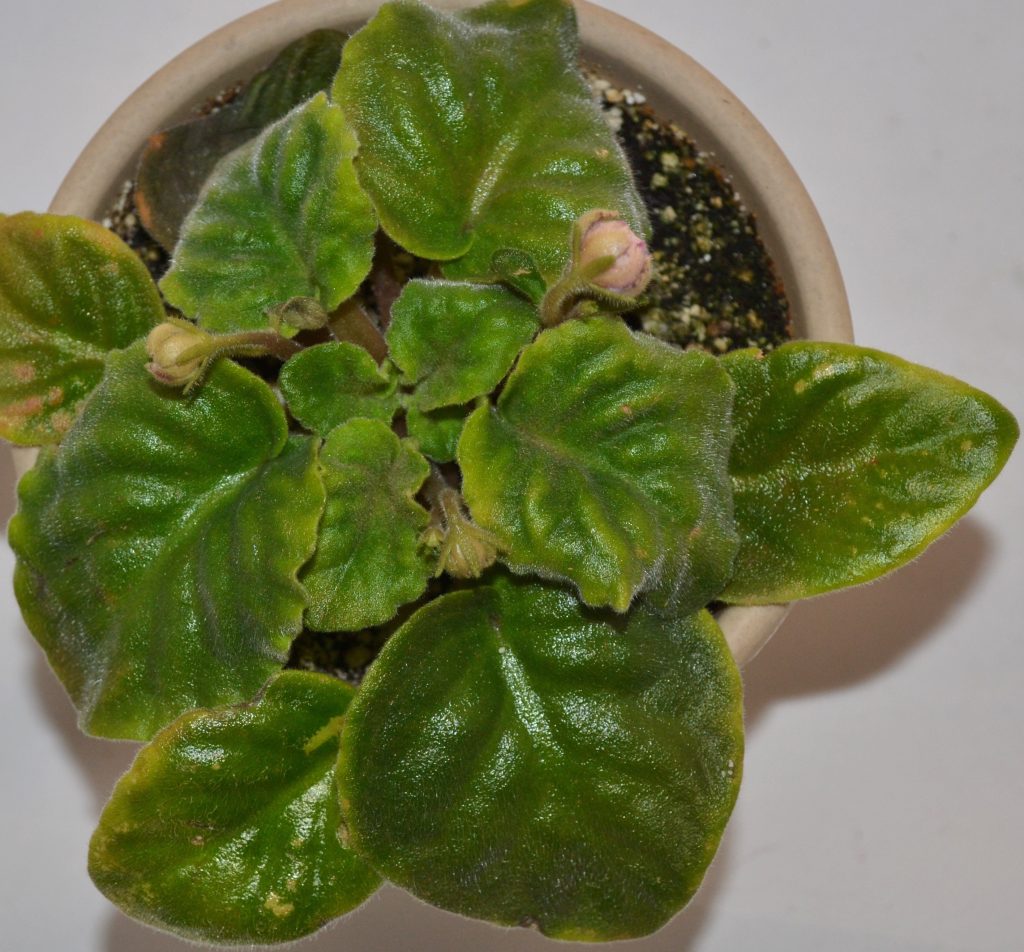
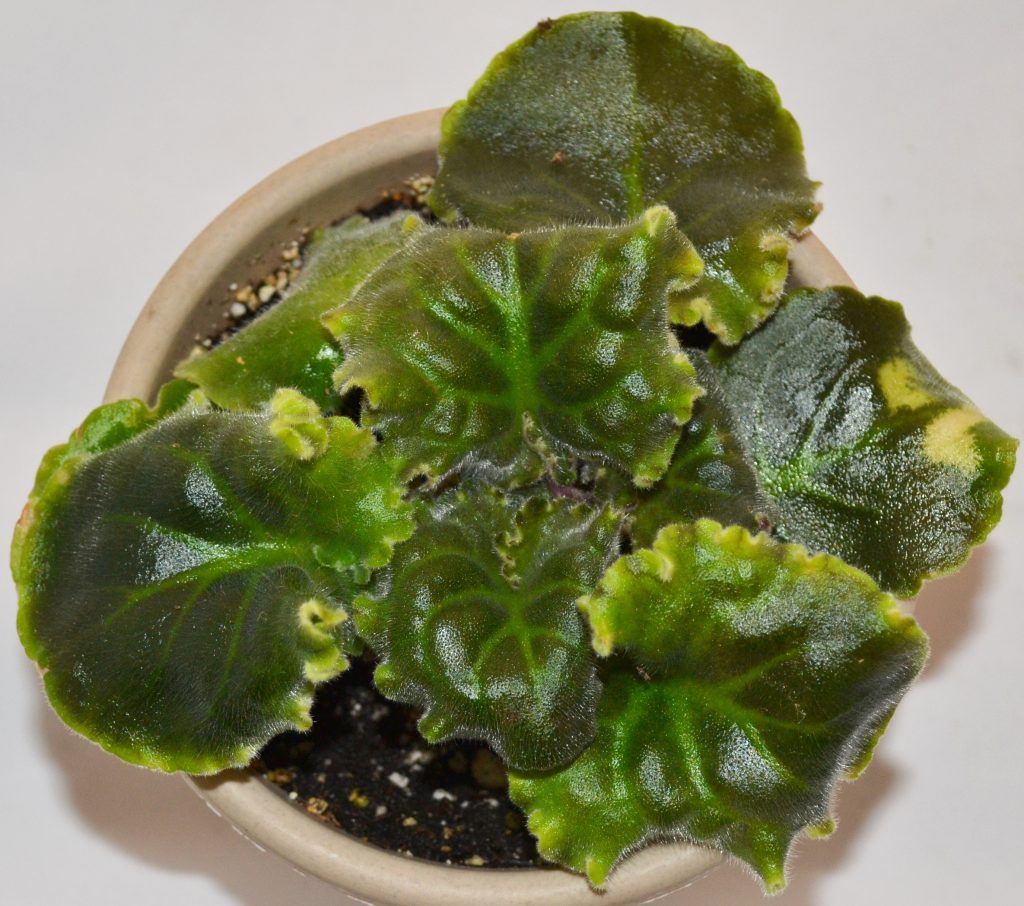
What Are the Symptoms of Dry Soil on African Violet Leaves?
- Visually if the middle leaves of the plant look droopy, dull or limp it may be time to water the African Violet. If the leaves are firm, crisp and shiny then they have enough water in them.
- If the droopy leaves are combined with dry top soil, then the African Violet needs to be watered.
- To check for dry soil, stick your finger gently in the soil (1/2 inch deep). If a lot of soil sticks to your finger and feels damp, then no watering is required. However, if your finger is clean and only a few dry specks are attached to your finger, then its time to water the African Violet.
- Remember to only water the soil when its dry, do not over-water. African Violets are very susceptible to over-watering, it can lead to root or crown rot.
- For more information on how to water African Violet plants, can visit blog post, “How To Water African Violet Plants?”
Examples of 2″, 3″ & 4″ plastic pots, great to keep a few extra in your growing tools:
What are the Symptoms of Root Rot on African Violet Leaves?
- The leaves will seem to droop down and the leaf stems of the bottom leaves will become brown and mushy.
- The leaves may also become mushy.
- The leaves will start to seem faded in color.
- The leaves will not be firm, but soft and droopy to touch, seem wilted in appearance.
- For more information about root rot remedy, can visit blog post, “Root Rot On African Violet Plants”.
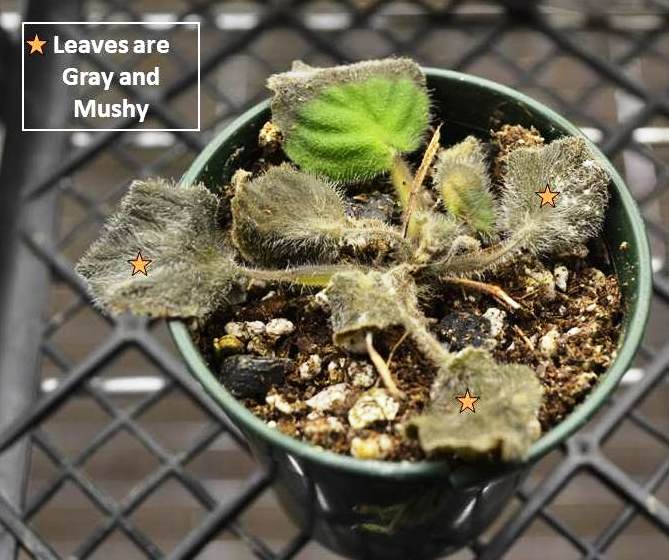
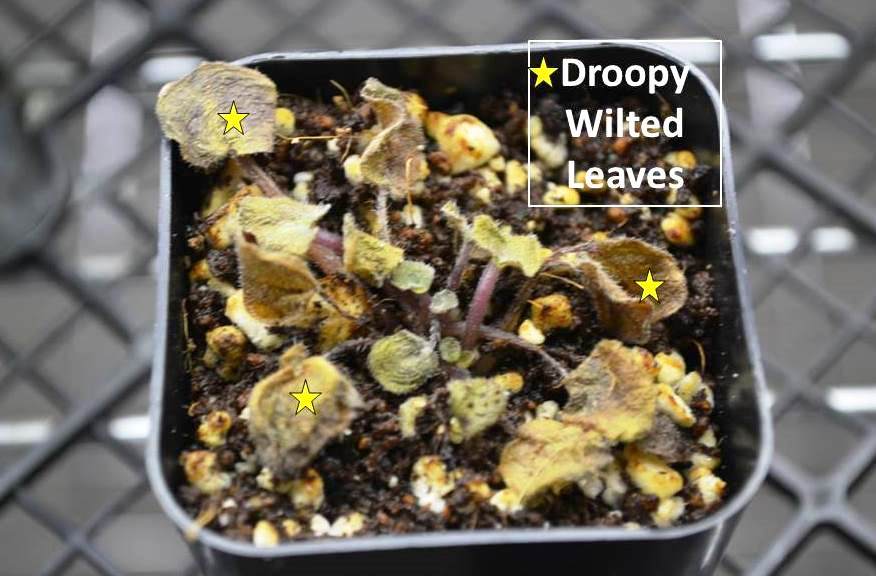
What are the Symptoms and Remedy of Root Bound Soil on African Violet Leaves?
- The leaves become limp and droopy and start to hug the rim of the pot.
- An African Violet plant is completely root-bound, when the whole soil surface area is tightly covered with roots, the roots are growing out of the pot holes underneath the pot and the roots are showing on the upper surface of the soil.
- African Violets like to be slightly root bound which promotes flowering.
- Root bound is when the roots start to grow out of the pot holes underneath the pot or when roots show on the upper surface of the soil.
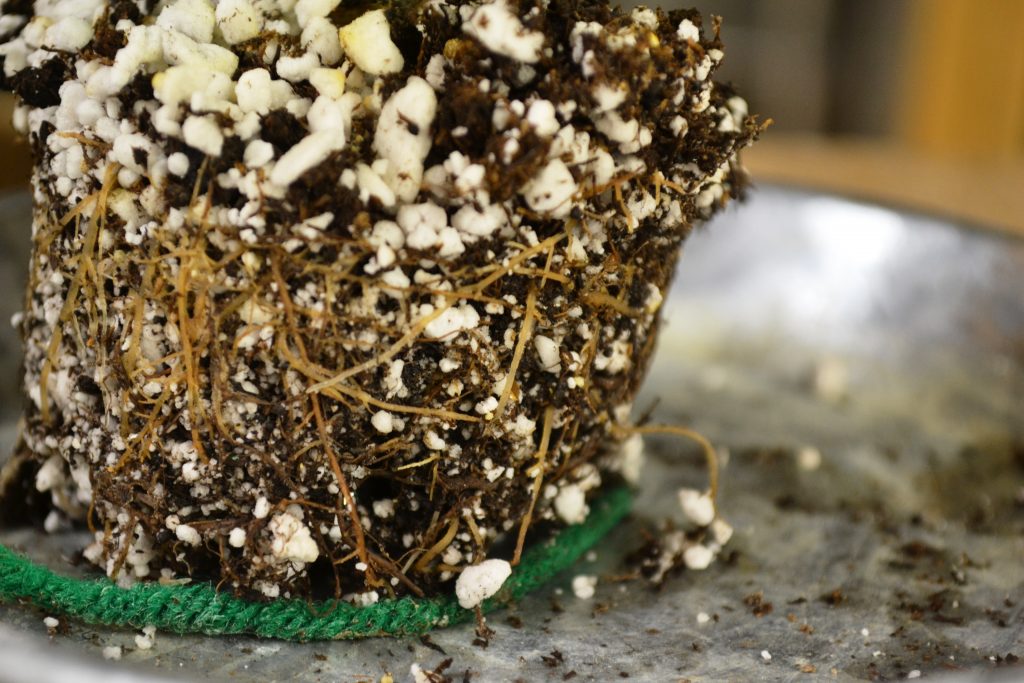
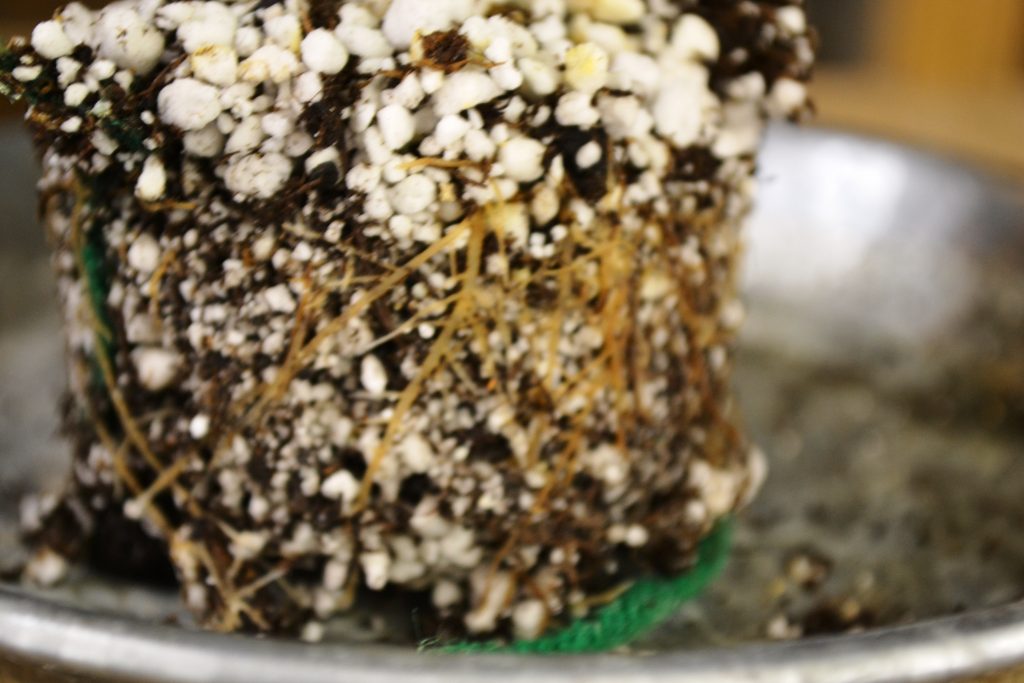
- If the soil mixture is old, the roots will not be able to absorb water and nutrients.
- This will over time affect the overall health of the African Violet plant and its leaves.
- If a plant is root bound, it is time to repot the African Violet.
- African Violets should be re-potted in fresh soil every 6 months and kept in the same size pot.
- For more info on repotting, can visit blog post, “How Often To Change African Violet Potting Soil Mix & Why?”
African Violet, perlite and other potting mixes shown below:
What are the Symptoms of Excessive Light on African Violet leaves?
- Symptoms of excessive light on African Violet plants are leaves drooping down or curling inwards.
- African Violet leaves also crowd together with no space in between when exposed to excessive light.
- The first initial telltale signs will be drooped down leaves and curling inwards.
- Then if African Violets are still left in the bright sun, leaves start turning yellow.
- They start to develop brown spots and scorched marks.
- The blooms will start to fade and eventually drop.
- For other reasons why African Violet leaves turn brown, can visit blog post, “Brown Leaves on African Violet Plants“.
Below are examples of light meters, useful to keep in your growing area, especially when monitoring low or bright light intensity.
How to Remedy Curling/ Drooping Leaves Due to Excessive Light in African Violet Plants?
- First you have to pin-point that curling/drooping are due to excessive light by identifying above symptoms.
- Once symptoms of excessive light are identified, place a thin tissue paper over the plant, to block out excess light.
- Can also move the plants to a lower shelf away from bright light or move the plant from bright direct light to a window with low filtered light.
- Leave the plant in the low light area for at least a month or until the leaves start to lay flat and symmetry of the African Violet is restored.
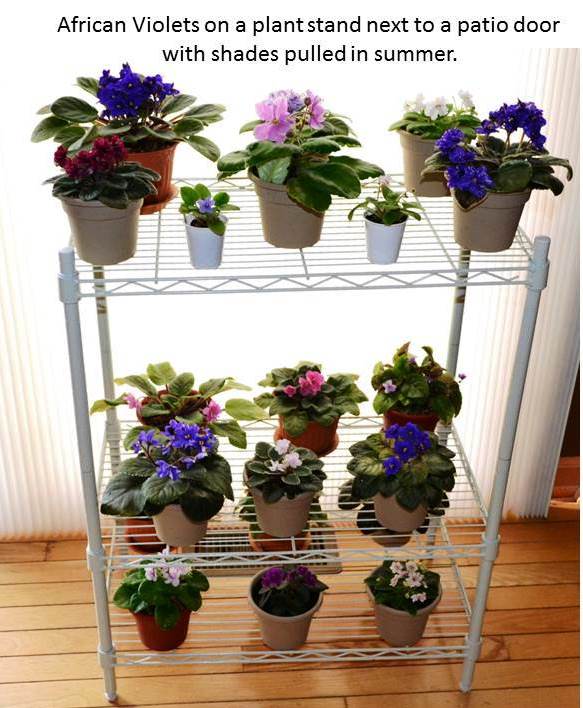
What are the Symptoms of Low Light on African Violet Leaves?
- When African Violet plants do not receive enough sunlight there growth slows down.
- The leaf stems start to become elongated/leggy.
- The leaves start to grow upright/upwards as if trying to reach for the light.
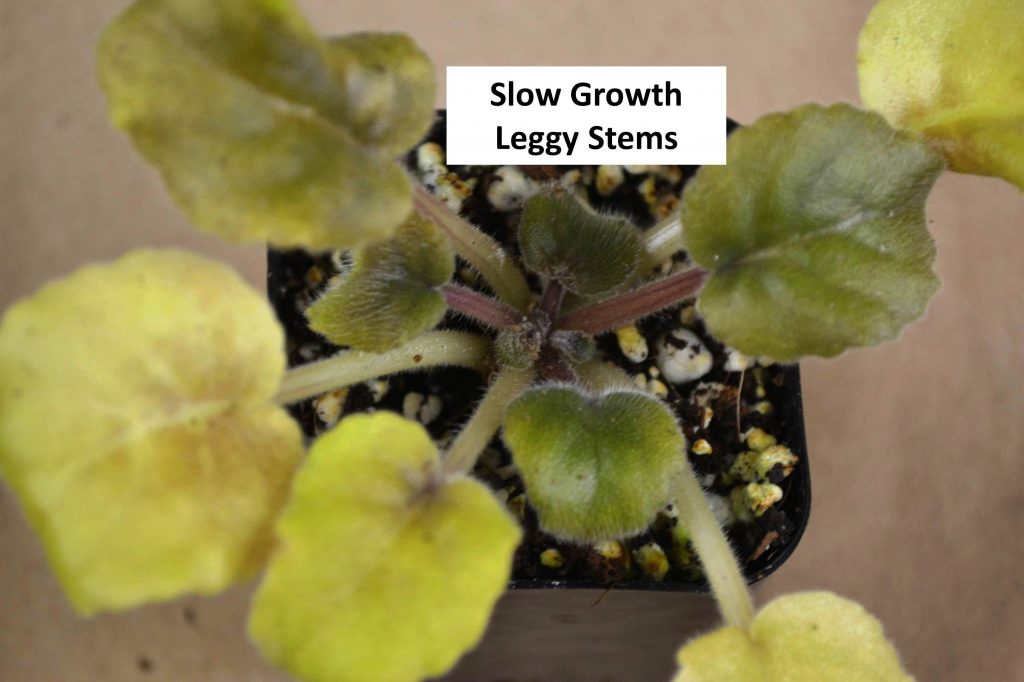
- The plant will be eventually stop blooming and no new buds or flowers will emerge.
- For more information on low light, visit blog post, “Growing African Violets Under Low Light: Symptoms?”
How to Remedy Curling/ Upward Reaching Leaves Due to Low Natural Light in African Violet Plants?
- The best option when it comes to low natural light, is to move the plant to a location which receives indirect bright light.
- Remember to rotate or turn the African Violet plant a quarter-turn once a week to maintain their symmetrical rosette form.
- For more information about the rosette shape of African Violets, can visit blog post, “What are the Different Types of African Violet Plants?“.
- If a different location is not an option, you can move the plant slightly away from the window or natural light source.
- African Violets require at least 8hrs of light per day and at least 8hrs of darkness per night to thrive.
- For long lasting blooms, 12hrs a day of natural sunlight is ideal. African Violets need bright light during the day.
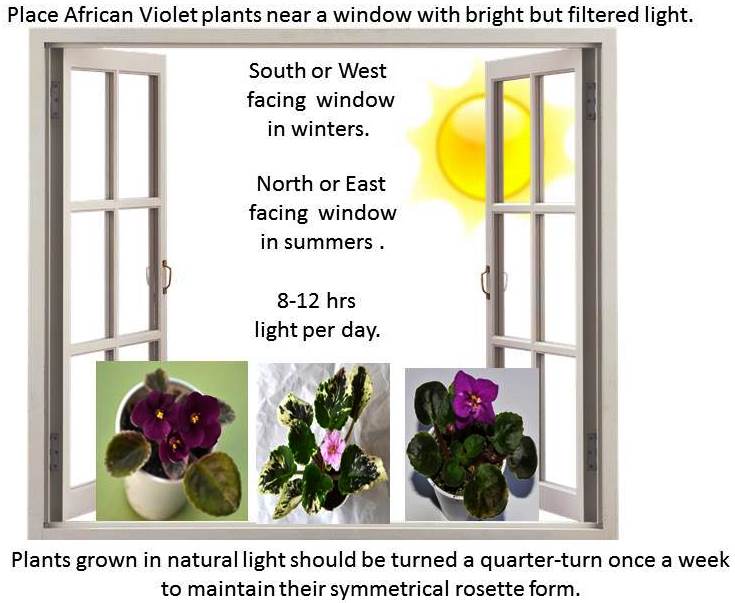
How to Remedy Curling/ Upward Reaching Leaves Due to Low Fluorescent Light in African Violet Plants?
- If the light intensity is too low for your African Violet plants, you can move them closer to the fluorescent lights.
- Either move up the shelf or lower the lights down closer to the plants leaves.
- You can adjust the distance between the plant and bulb, till the plants starts to grow like a flatter rosette shape again.
- You can also move the plants towards to the center of the plant stand, as light intensity is stronger in the center of the fluorescent bulbs compared to the ends of the bulbs.
What Are the Symptoms of Curling/Drooping Leaves due to Excessive Heat in African Violet Plants?
- Symptoms of curling/drooping leaves due to excessive heat in African Violet plants are bunched up smaller leaves at center of plant.
- African Violet leaves curling up or inwards.
- African Violet leaves crowding and growing closer together.
- Outer leaves dry up and become crispy brown.
- Plant growth slows down and stops to bloom.
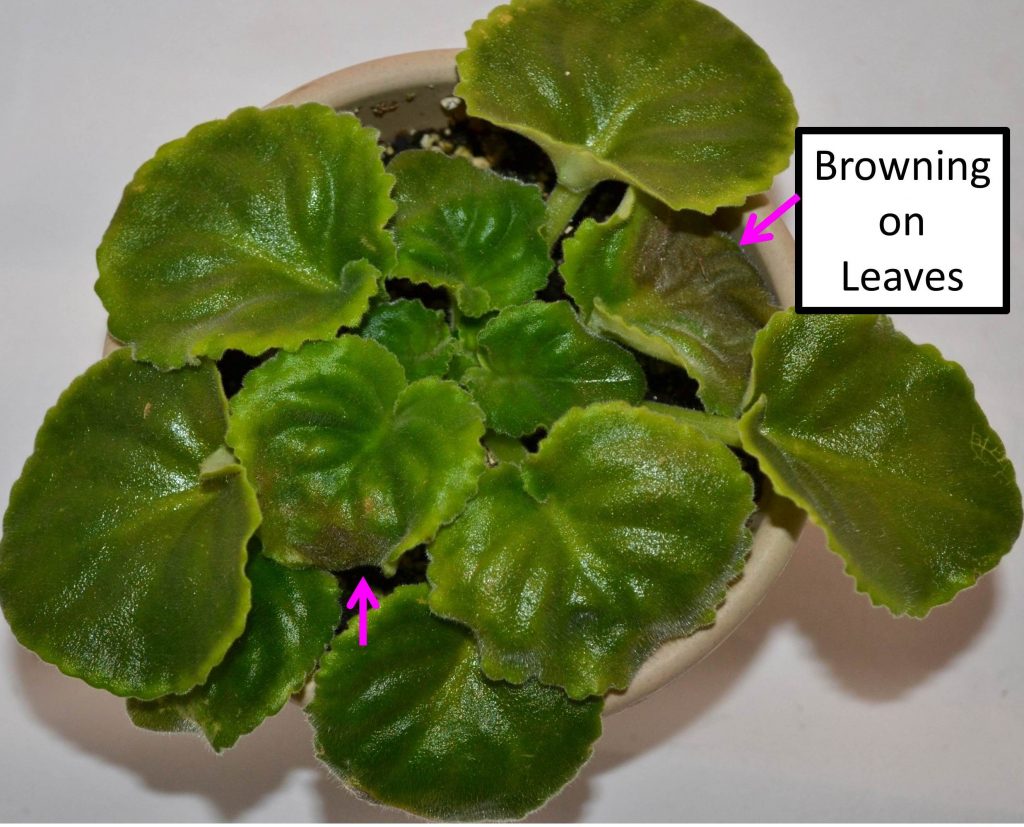
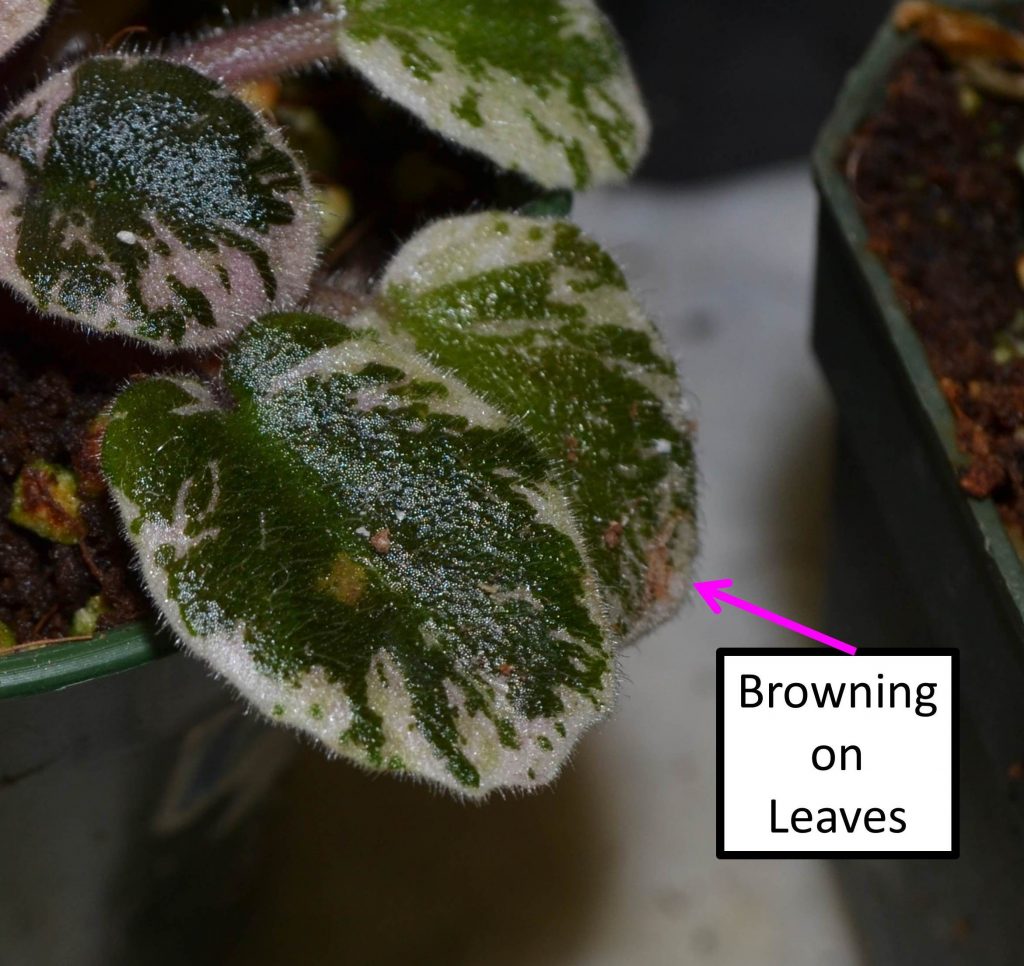
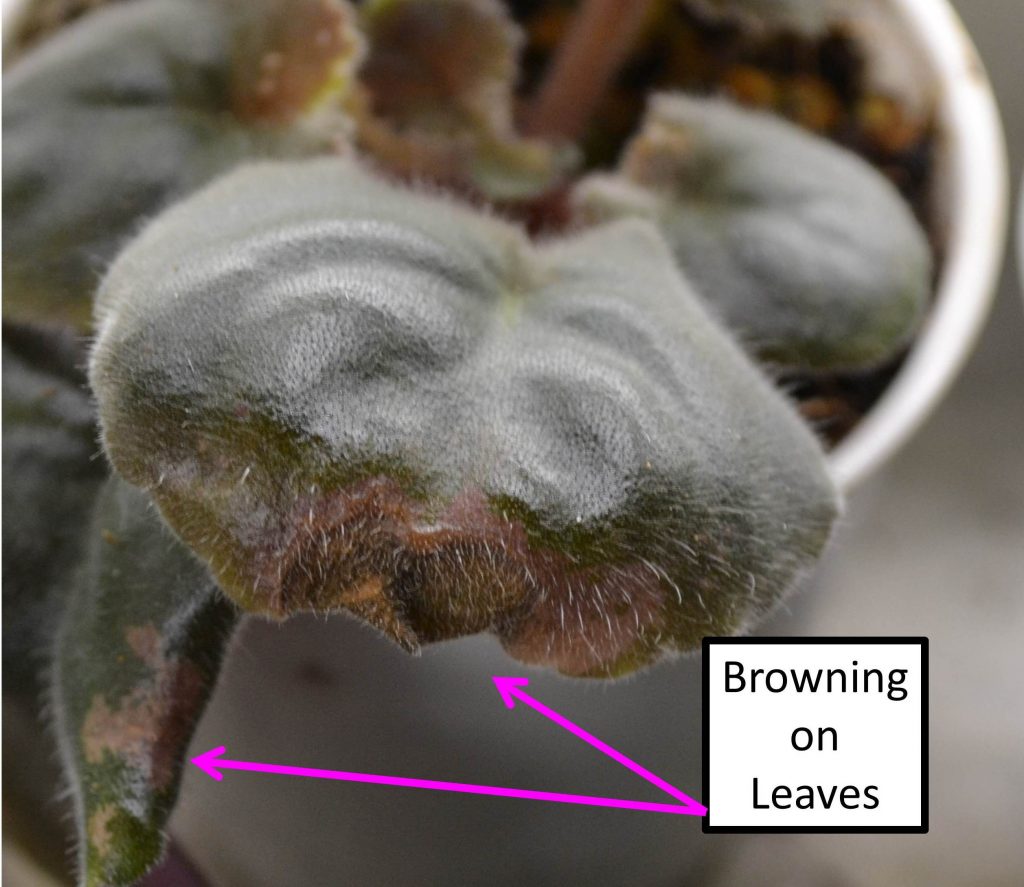
How to Remedy Curling/ Drooping Leaves Due To Excessive Heat in African Violet Plants?
- Remedy would be to try to lower temperatures in plant area below 80F.
- Another option would be to move the plant to a slightly cooler location in the house.
- Alternatively can draw the curtains or close the blinds to block out excessive light and make the area cooler at the same time too.
- The leaves will start to flatten out and straighten, but over a period of several weeks. It will take time if symptoms are due to excessive heat.
- Another option, if growing under lights, would be to reduce the number of hours to 8-10 hrs under lights.
- Alternatively, you could keep the lights off during the day and keep them on at night, when temperatures are too hot and cannot be controlled.
- Make sure to increase watering during this period of hot days and not let the plant soil to dry out too much.
- The African Violet plants can tolerate excessive heat for a few days, but prolonged heat will damage the plants permanently.
Ceramic pots with different designs, can be used as a nice outer container for your African Violet plants, as shown below:

*Our Affiliate Programs: We are a participant in the Amazon Services LLC Associates Program, an affiliate advertising program designed to provide a means for us to earn fees by linking to Amazon.com and affiliated sites.
Though we do link to many items on Amazon out of convenience to our readers, we do also participate in other affiliate programs that also pay us a commission for any purchases you might make through our links (at no additional cost to you!).
Like this article?
Share on Facebook
Share on Twitter
Share on Linkdin
Share on Pinterest


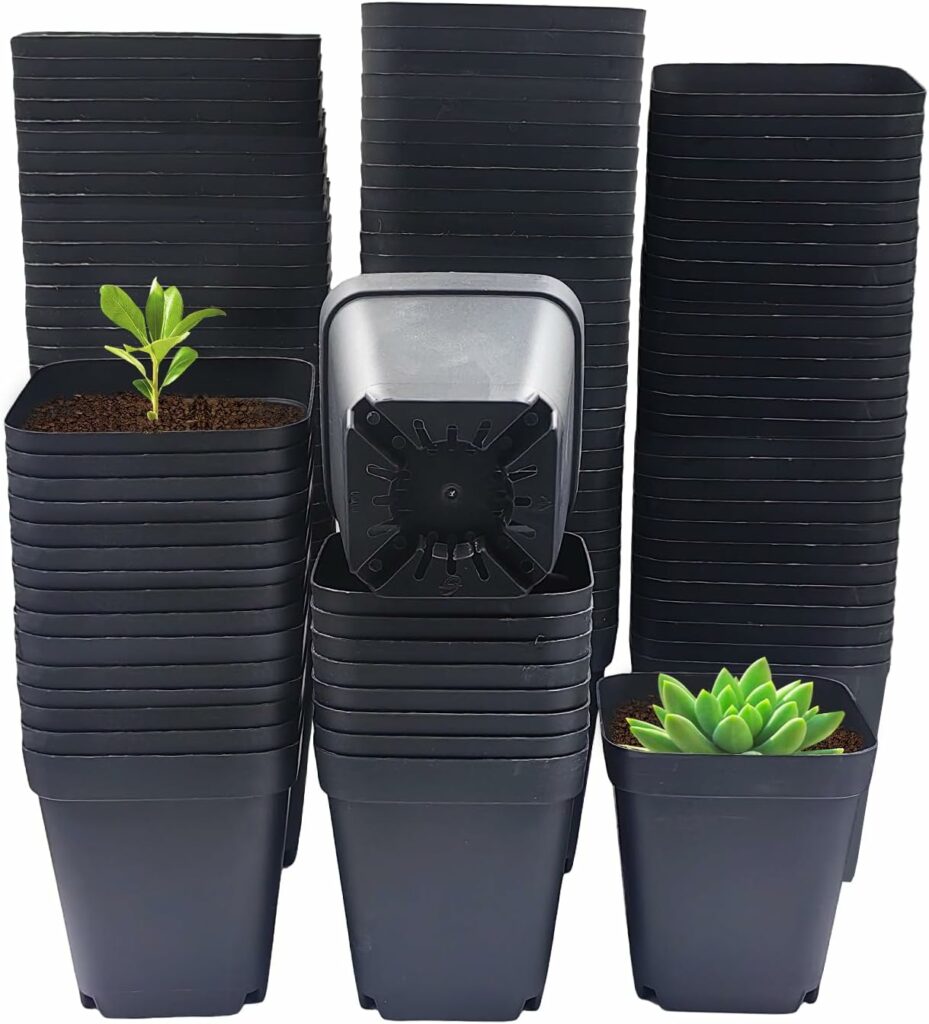
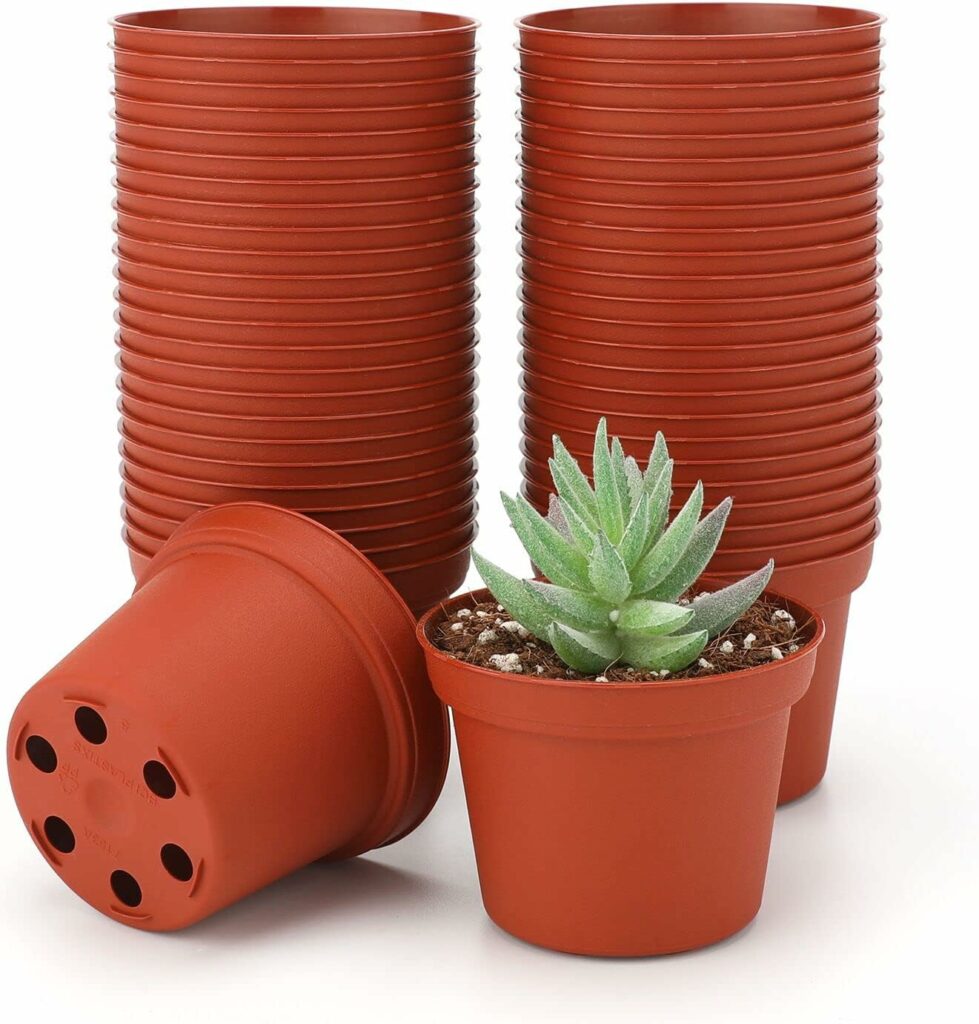
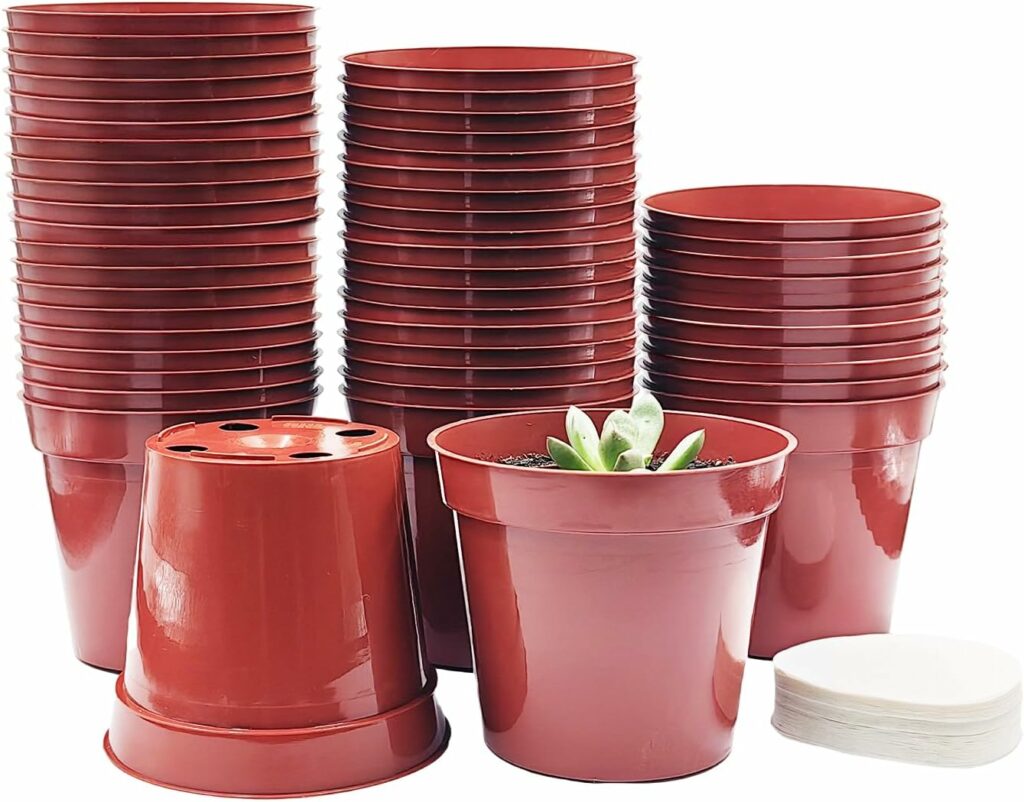
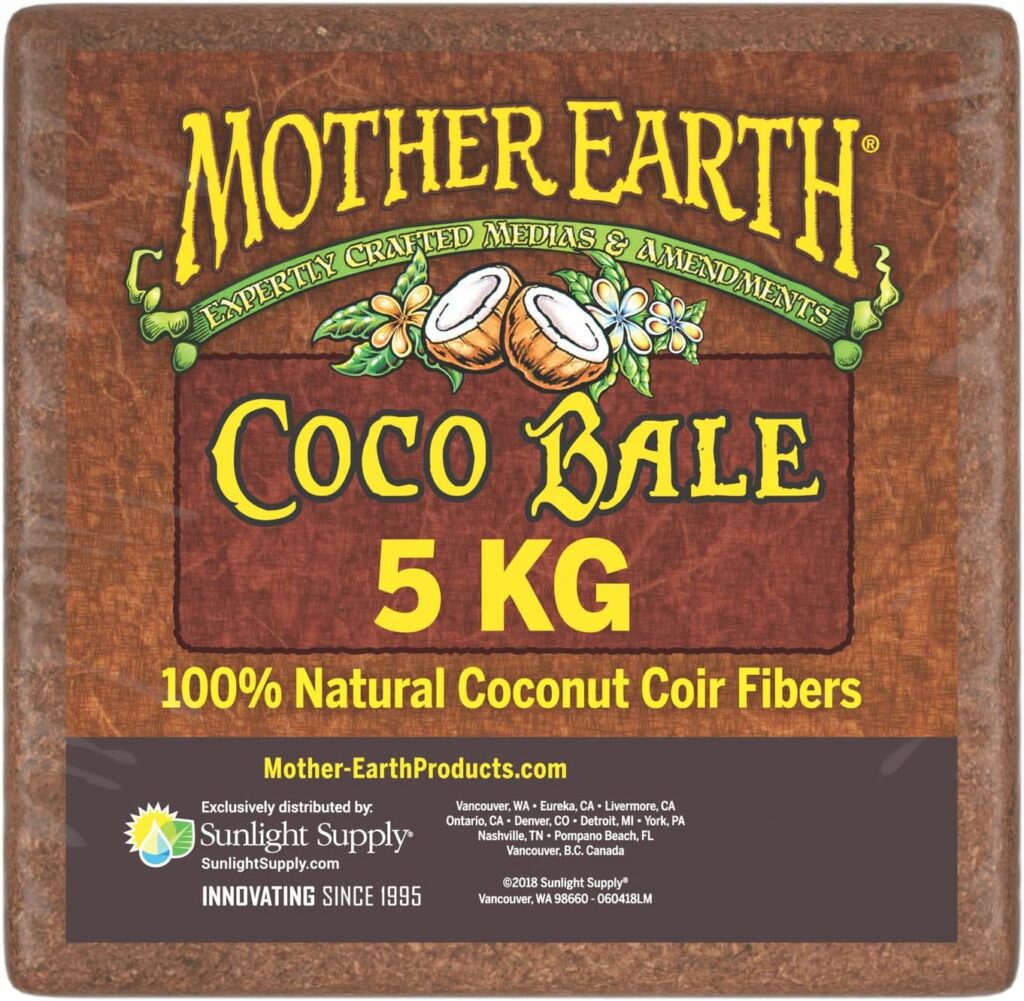
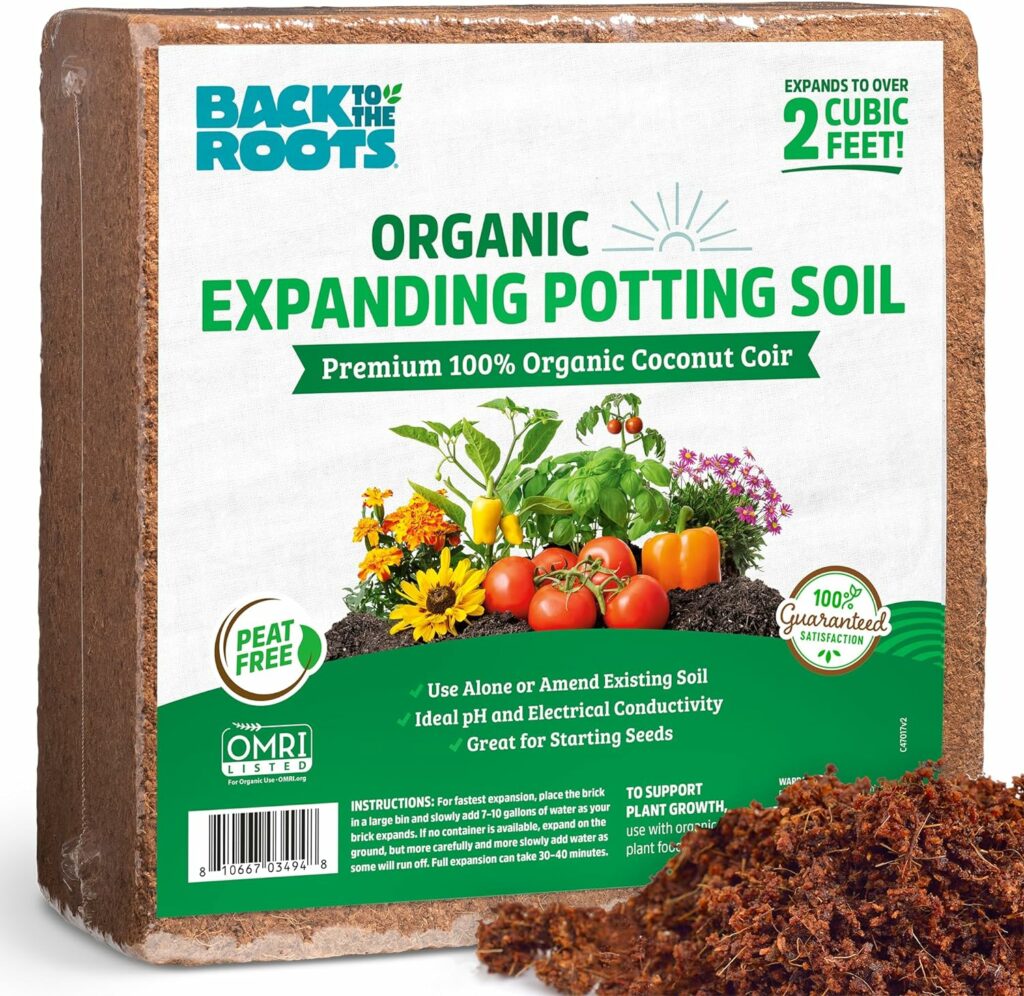
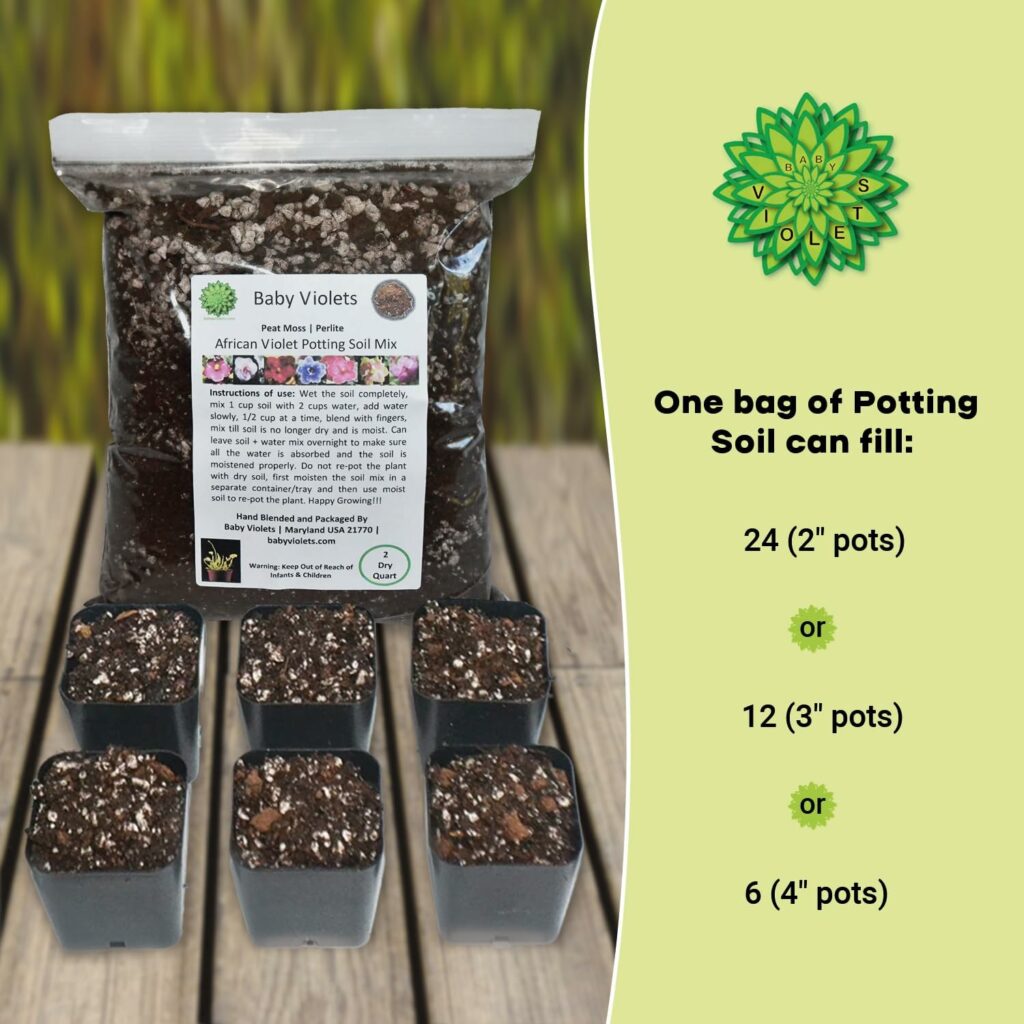
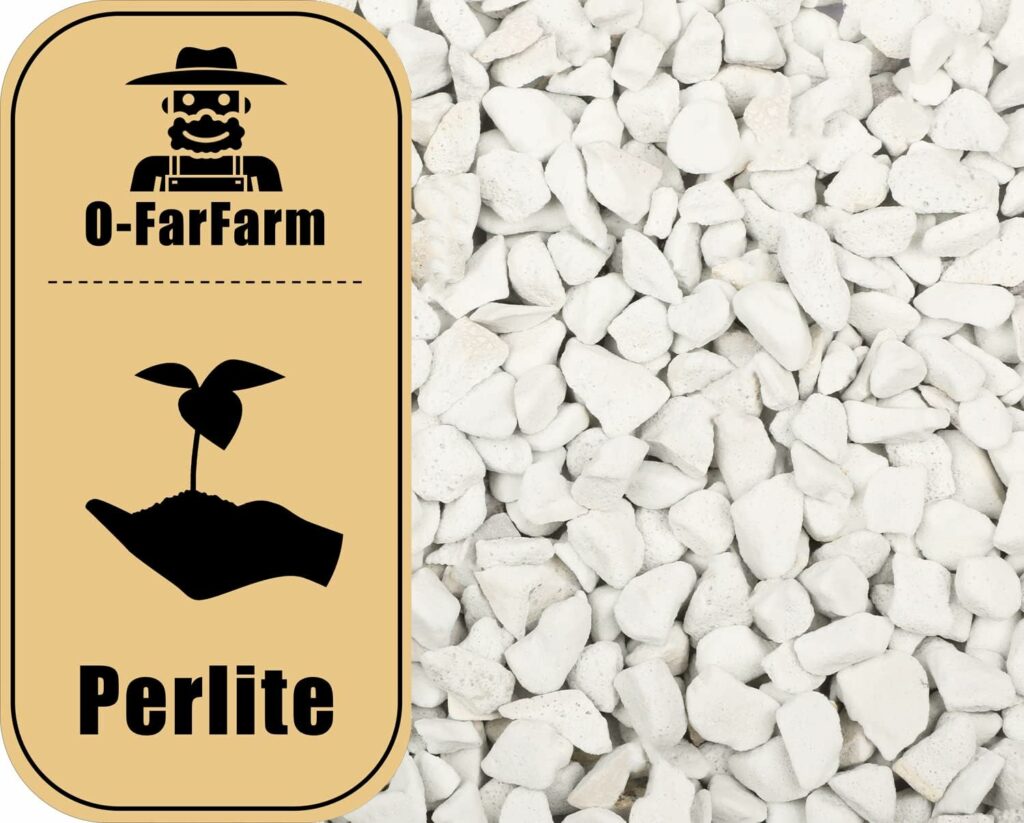


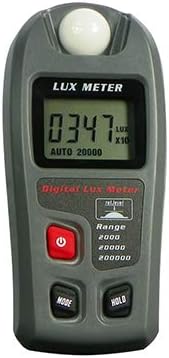
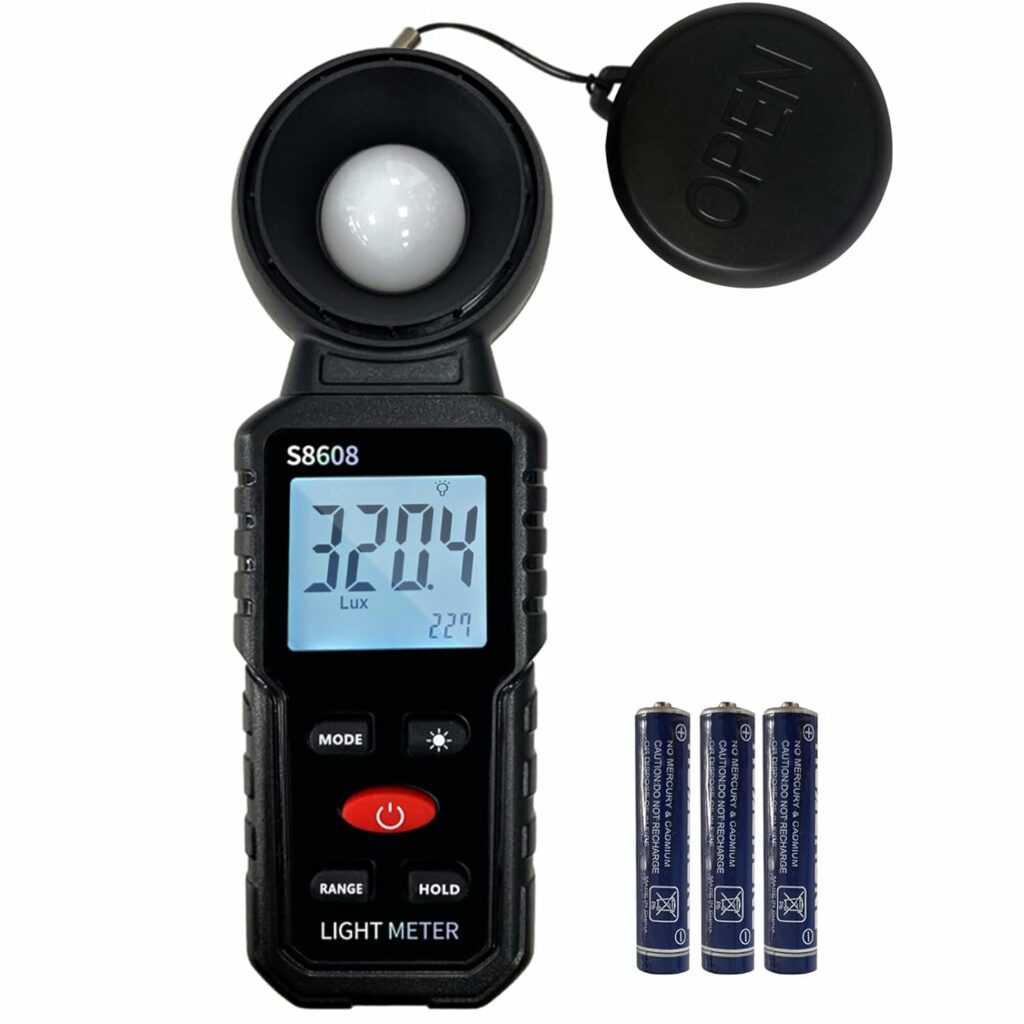
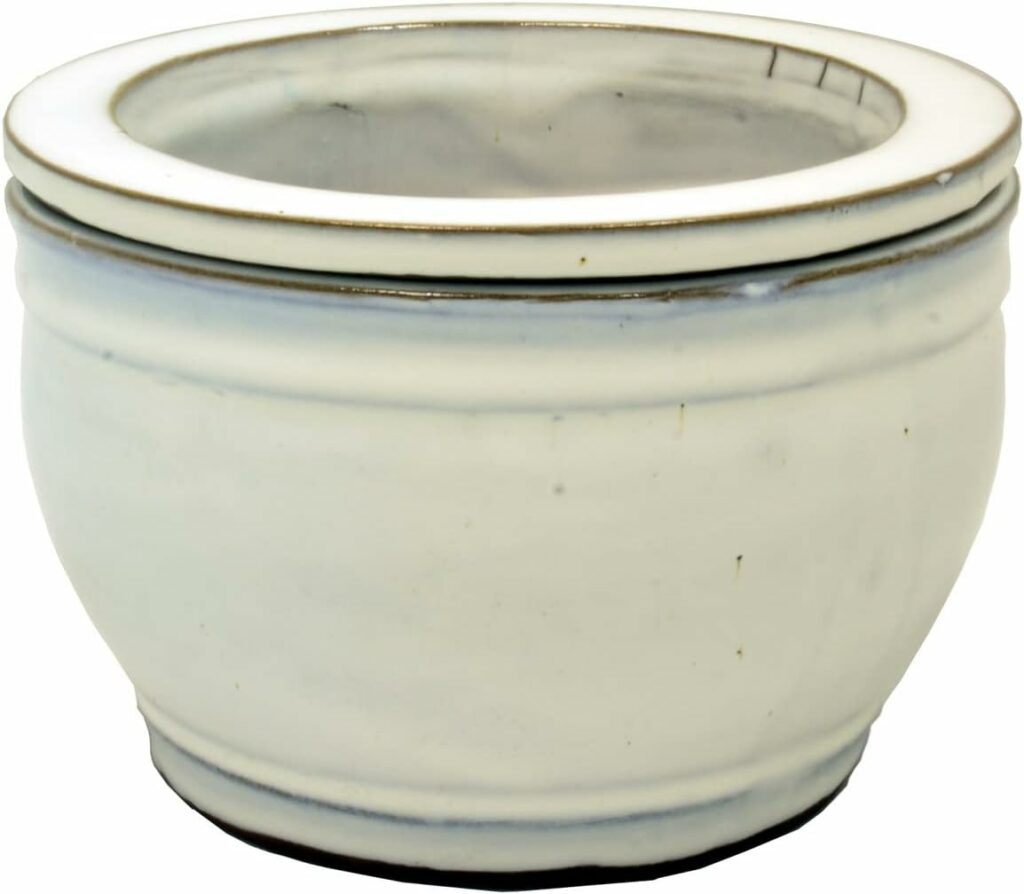
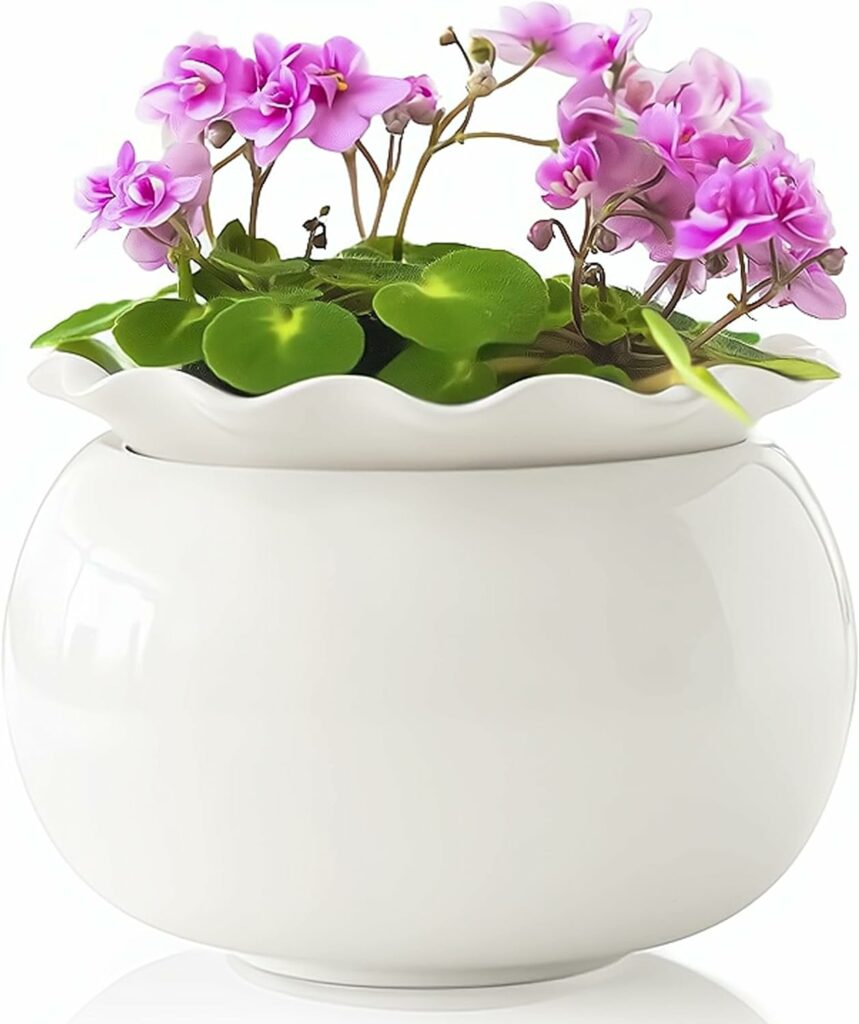
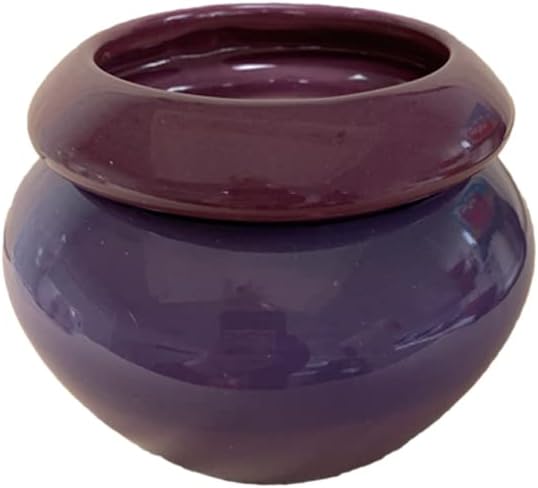


24 Responses
this site has the best information I have found overall. Thank you.
Hello Pamela,
thank you for your kind words. I am happy to hear the articles were useful.
regards,
BV
Ok. I have a very tightly packed violet. The leaves are curled under and brittle. I am so glad I found this sight!!! She is under a grow light so not sure if she’s getting too much light, but I’m going to move her over just out of the grow light for a month and see if that helps her. I’m also going to repot her. Thank you do much for this info! I’ll try to repost how she is doing if I remember 😉
Hello Heather, glad to be of help, hope things works out, regards, BV
I used to raise African Violets probably 30 years ago, and these articles have brought back a lot of stuff I used to do to tend my plants. Good memories, I loved my plants! I had grown an u usually big and beautiful purple AV with a single yellow center, I can’t tell you the name of it now, but I could name them all! My kids were jumping on their bunk beds and knocked a big picture off the wall and right on top of my AV, it cut the edges o the leaves off at the edge of th pot! I tried to save it, an I was sick cause I could t. It was in shock. It was the most beautiful and the biggest AV I’ve ever seen. Now for some reason, I’ve decided to try again! Wish me luck. Your articles hot me all fired up and ready to go! No where could I find an AV I had to go on internet to see if I could buy one and I bought 2 instead. One like the one I lost and a pink one. At one time I probably had 30 different Ave. Wish me luck. Thanks!!!
Hello Elaine,
thank you so much for posting your experience with African Violets. Yes, many people have come back to the hobby and I am happy to hear you are one of them. Best of luck with your violets!! Happy Growing!
regards,
BV
I repotted mine and now it’s drooping. It did well where it is before repotting. I think the pot may be too big. Should I cut off the lower dtoopy leaves & put into a smaller pot? The leaves look green & healthy, just droopy.
Hello Vivian,
thank you for your message. If the leaves are drooping after repotting, its still acclimatizing to the new soil. You can place the plant into a ziploc baggie for a week or so and see how it does. Remove any mushy leaves. If they are just droopy, still green in color, you can leave them. If they have become mushy, greyish / brownish in color, soft to touch and not firm then remove them. For size of pot guidelines, can check out, http://www.babyviolets.com/what-pot-size-to-use-for-african-violet-plants/. For now, since you just repotted, dont re-pot again, put in a plastic bag and see how it does. If nothing changes, then yes, can repot into a smaller pot and place in a baggie again for a few weeks.
Hope this helps,
BV
I recently purchased a small african violet – repotted it – it sits facing north on a window sill, no direct sun. It initially dropped all of it’s flowers but is now flowering again. I water it once per week and use a weak non urea fertilizer ( 14-12-14). Recently one leaf became very soggy looking and eventually dropped off. Now another leaf is doing the same. The rest of the plant looks very healthy. Is this normal? I try not to get any water on the leaves when watering.
Hell Deborah,
thank you for your question. Dropping of flowers is fine, glad to hear its re-flowering, maybe the flowers were just old and maybe since you brought it home, it was a change of environment. Are these leaves on the outer rim or the outer ring of the leaves. If yes, then older outer leaves regularly drop off, they become dried or brown in color. You can gently remove that leaf along with its leaf stem, snap off the leaf stem closer to the crown/main stem. If another leaf is also become soggy, that’s ok, as long as its not the middle or center row of leaves. You can stop watering for now, does the soil always look wet/moist. You can allow the soil to dry out for a bit, not completely bone dry, but at least dry enough, when you stick your finger in the soil, it should feel dry upto 1 inch inside. If the rest of the plant looks fine, then yes this is normal. Good to hear you are not getting any water on the leaves. Can visit, my post, http://www.babyviolets.com/how-to-groom-african-violet-plants/, how to groom plants, which can provide more detail on removing older leaves. Hope this helps.
regards,BV
Ruth Warren here, need to know what could be the problem with my african violet which has pink leaves. it looks drooping leaves. I have check water and driness looks normal. please help.
Hello Ruth, When you say pink leaves, are the underside of the leaves pink / red (the underneath area). I have not heard of pink leaves, unless it has pink variegation mixed with green/white or cream. If they are the outer older leaves, the drooping is normal, they need to be removed as part of general grooming. Have you re-potted lately. If its been in the same pot for over 6 months, it may be time to re-pot. Drooping leaves are a sign of either under or overwatering, or too much light. Hope this helps, you can send a pic to babyvioletss@gmail.com, that way I can see the plant. regards, BV
Hi, I bought a violet at Lowe’s because I didn’t have on with the flowers it had. I saw it had 3 good size suckers on it. I put it in quarantine for about 3 weeks. It was doing great. I decided to remove the suckers to plant them. I removed the 2 biggest ones. The next day the violet started to droop. I thought, and still do, that it was in shock. It didn’t get any better. I finally took off leaves and reported it in a smaller pot. Now the crown is decaying. Do you think it was from taking off the suckers? I’ve never heard of that, but the flowers and the leaves were perfect until then. Your thoughts would be appreciated. Thank you!
Hello Juana,
thank you for your African Violet question. I dont think it was from taking off the suckers. Unless while remove the suckers, the plant stem/crown area was scrapped off too much or it was repotted into heavy moist soil. Sorry to hear that the crown is decaying, there is not much you can do next to save the crown. I have not heard before, of a plant going down hill after removing the suckers. I dont think it was that. Maybe next time, if you remove lots of large suckers from the plant, you can put your original plant in a ziploc baggie for a few weeks. The extra humidity, will help it perk up. Not sure, what else could have caused your original plant to start drooping. Glad to hear you saved some leaves and have planted the suckers. regards, BV
My violets are flowering, lots of blossoms but the flowers are smaller then usual. The plants are also dropping outer leaves. Is this caused by high temperatures, very warm here the last month or more.
Hello Everett,
thank you for your question. Usually, it is normal for the older outer leaves to droop over time and die off. If its only a few drooping outer leaves, you can remove them. If its the whole row, the leaves are overcrowded and only the outer leaves are drooping, you can remove those leaves too. Drooping leaves which are soft to touch and limp and have lost there shine/luster, could be dry soil. If the lower leaves are brown and mushy, it could be over watered. This can also happen, if the plant has gone through dry/wet cycles, that is if the plant was bone dry, then it was watered and then again it became dry. This can stress out the leaves. If the leaves are crunchy, tightly growing together and hugging the rim of the pot, it could be excessive light. I am not sure if high temperatures can cause drooping, usually violets are resilient. Unless those high temps, kept drying out the soil, that could cause droopiness. Hope this helps, regards, BV
Regarding the dry soil. I use only peat and perilite for soil. Could the wick be worn out? Thanks again for your input.
Hello Everett,
thank you for your question. I think using peat moss and perlite in soil is ok, it shouldnt dry out the wick. You can add a thin layer of perlite at the bottom of the pot, then top off with peat moss+perlite soil mix. Also before putting the wick in the pot, can make sure its moist/wet. Yes, the wick can wear out over time. Can change the wick every 6-8 months, when you re-pot is a good time to change the wick too. Yes you are right, a worn out wick can cause dry soil. Hope this helps,
regards,
BV
Regarding the dry soil. I use only peat and perilite for soil. Could the wick be worn out?
Hello Everett,
thank you for your question. I think using peat moss and perlite in soil is ok, it shouldnt dry out the wick. You can add a thin layer of perlite at the bottom of the pot, then top off with peat moss+perlite soil mix. Also before putting the wick in the pot, can make sure its moist/wet. Yes, the wick can wear out over time. Can change the wick every 6-8 months, when you re-pot is a good time to change the wick too. Yes you are right, a worn out wick can cause dry soil. Hope this helps,
regards,
BV
All leaves are curling under, it is not in direct sun light. The home is cool temp w/ AC.
Should I place a plastic bag on top?
Thank you,
Tami
Hello Tami, thank you for your question. If the leaves are curling under, yes it may be cold temperatures if its not too much sunlight. You can place a bag on top, check after 1-2 weeks if that made a difference. If not, can move to a south facing window or a place which doesnt get too much bright light. Hopefully that will help. BV
Hello, one of my African Violets leaves are a pale green and redish colour on the stem and back of the leaves. The leaves also sick straight up in the air and feel a bit stiff. It doesn’t have a tight centre.
Hello Lorraine,
thank you for your question. Regarding the leaves, some African Violets do have reddish color backs and stems, that seems to be normal. If the leaves are sticking up in the air, it maybe that they are reaching for light. You can move the plant to another location, which receives more sunlight, after 2-3 weeks the leaves should lay flat and not stick up in the air. If the leaves are stiff, is the soil too dry? Watering may help. regards, BV